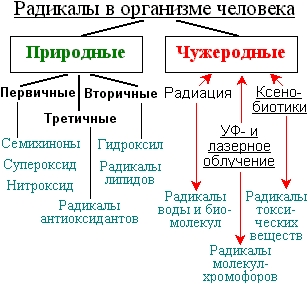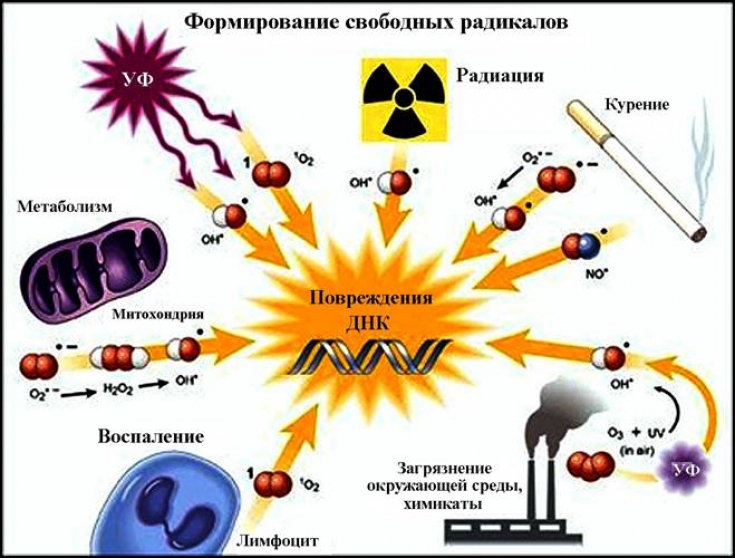Today, most of the cosmetic products contain antioxidants, which eliminate the excess of free radicals in the cells. Oxidation products, they are also free radicals, play an important role in the aging process of the skin.
In order to understand their role in aging-related changes it is worth noting that in their structure free radicals – unstable molecular particles, derivatives of oxygen, the accumulation of which damages cell structures and disrupts regeneration processes.
On estet-portal.com read about the effect of oxidants on the aging process and effective ways to combat them.
The main mechanism of free radicals occurrence
All oxidants are divided into natural and foreign. Natural, in turn, can be:
1. primary;
2. secondary;
3. tertiary;
Follow us on Instagram!
Due to the unpaired electron on the outer shell, oxidants are highly reactive: a free radical tends to capture the missing electron through another molecule or give yours. In the first case, the molecules from which the particle was captured remain with an unpaired electron, like the radicals themselves. To replenish their potential, they bind other molecules, a cascade of reactions is triggered and this process is called oxidative stress.

The main factors influencing oxidative stress
Normally, primary (beneficial) radicals are very important for our body, as they help phagocytes fight bacteria, viruses and fungi.
Secondary oxidants such as hydroxyl and lipid radicals have a destructive effect on cells.
Unlike secondary radicals, tertiary radicals have a less pronounced damaging effect on cell structures.
Among the factors causing oxidative stress, the main ones are distinguished:
• radiation;
• smoking;
• ecology;
• xenobiotics and antibiotics;
• preservatives and semi-finished products;
• excessive insolation.
Our body has its own antioxidant system that controls oxidation processes. However, it can't always handle excess free radicals, leading to premature aging and serious disease.
You may be interested in: Photodamage and premature aging: what happens and how to repair the skin
Negative effect of oxidants on skin condition and aging processes
Secondary radicals destroy lipid molecules, which are the protective barrier of any cell. This is especially important for the cells of the epidermis and dermis, because lipid oxidation contributes to moisture deficiency, inflammation and the penetration of infections into the deep layers of the skin.
In addition, oxidizing agents inhibit the synthesis of collagen and elastin, which are responsible for the firmness and elasticity of the epidermal layer - that is, for youthful skin.
Molecules of proteoglycans and hyaluronic acid are also destroyed, respectively, cell regeneration processes are disrupted.

Effective methods of combating oxidation processes in the body
In addition to foods high in antioxidants, giving up bad habits and limiting sun exposure, you should also pay attention to cosmetic preparations.
It is important to choose products with the following ingredients that fight free radicals:
• polyphenols;
• vitamins A, C, B3, E;
• coenzyme Q10;
• alpha lipoic acid;
• glutathione;
• zinc;
• copper;
• beta-carotene;
• idebenone.
These substances are found in many creams, serums and balms.
To enhance the antioxidant effect, it is recommended to use several active ingredients at the same time.
And also it is worth paying attention to protecting the skin from ultraviolet radiation. It is impossible to completely avoid the destructive effects of free radicals on cells, however, modern cosmetic preparations make it possible to protect and saturate the skin with useful elements.
Read also: How do peptides and antioxidants work in the correction of age-related changes







Add a comment